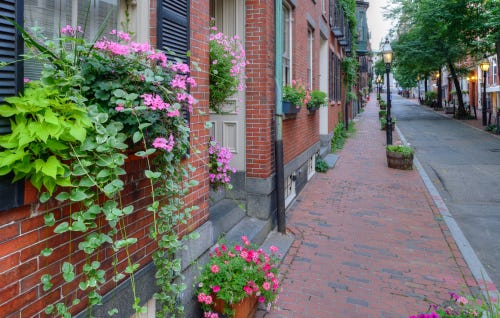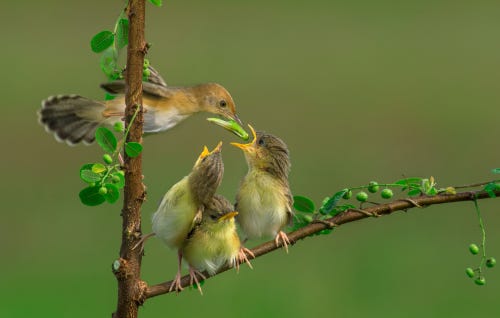Go Native
Provide essential habitat for wildlife
This post is for everyone, not just people with lots of outdoor space. Don’t have a yard? Put a few pots on the balcony or add a window box. If your building has some outdoor space, ask if you can turn a small section into a flower garden. It’s an easy way to increase much-needed habitat for wildlife, and it doesn’t take much to make a difference. If you live in an apartment several stories up, lots of wildlife takes wing and will readily find the plants you put out. You might get a bird nesting there, but more likely, you will spot a variety of small insect visitors.
That’s a good thing.
Boosting beneficial insects
We tend to lump insects into two groups: pollinators and pests. But not all beneficial insects are pollinators and the vast majority of insects are not pests. Only about 1% of all insects bite, sting, or cause damage to crops and property.1 The rest pollinate, help break down dead plants and animals, or keep pest insects under control, either by eating them or by using them as a food source for their young.
Ants are nature’s clean-up crew, quick to dismantle a dead grasshopper or round up fallen leaves and seeds. Ladybug and lacewing larvae are voracious predators on a variety of pest insects, including aphids, whiteflies, mites, and scales.2 Parasitic wasps lay their eggs inside caterpillars or other insect larvae. Some species turn the host insect into a zombie that not only feeds the wasp larvae (from the inside out) but actively protects them after they pupate.
Supporting insects supports other wildlife
We hear about flowering plants in the context of pollinators, and they are definitely important. But insects play an even more critical role in the ecosystem as food for other animals. Many birds, mammals, reptiles, amphibians, and fish depend on insects. Without that protein source, other animals lack the basic nutrition they need to successfully reproduce or raise their young. Even seed-eating birds feed insects to their nestlings, but this food source is becoming scarcer.3 If we can reintroduce more places where insects can find the food they need, we increase the chances birds and other animals will flourish.
Native plants do more
Native plants are adapted to regional soils, rainfall patterns, and day length, which allows them to survive with less effort on your part. They also provide critical habitat for insects and other wildlife. This goes way beyond providing flowers for pollinators. If we want to have adult insects around, we have to think about what their larvae need to eat—and for many species, that’s leaves.
The type of plant matters. Many insect larvae specialize on particular types of plants. Best known is the monarch butterfly’s need for milkweed, but they’re not alone. An estimated 90% of insects rely on specific host plants to raise their young.4 Common garden plants don’t provide this essential source of food, so making the switch to natives can turn a food desert into a buffet.
Yes, this means insects will be eating your plants, but it’s a long-standing relationship, and the plants will survive. After all, if nothing’s eating your plants, they’re not habitat.
If you like One Simple Thing, please forward to a friend who might be interested in taking steps toward a healthier planet!
Cornell CALS. Don’t bee fooled: Not all insects are pests https://cals.cornell.edu/news/dont-bee-fooled-not-all-bugs-are-pests
University of Florida IFAS. Beneficial insects: Lacewings and Ladybugs https://gardeningsolutions.ifas.ufl.edu/care/florida-friendly-landscapes/beneficial-insects.html
Nilima Marshall. Urban bird populations need insects. Ecologist. https://theecologist.org/2020/may/18/urban-bird-populations-need-insects
Emily Underwood. Why you should grow native plants in your garden. Smithsonian Magazine. https://www.smithsonianmag.com/science-nature/why-you-should-cultivate-native-plants-in-your-garden-180982823/




